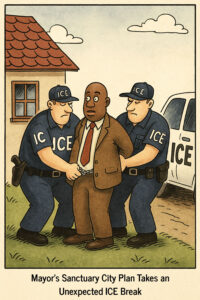 There are political operatives, and then there are demolition men. Steve Bannon has always preferred the latter role.
There are political operatives, and then there are demolition men. Steve Bannon has always preferred the latter role.
To understand Bannon is to confront a paradox: a man who rails against elites while engineering systems that empower them. He has moved through finance, media, and politics like a pathogen with purpose—unseen until the fever breaks.
Bannon isn’t just a former strategist. He’s a doctrine in motion. A belief system packaged as populism, built atop nationalist rhetoric, weaponized media, and global far-right alliances. His résumé reads like a pipeline to chaos: Goldman Sachs, Breitbart, the Trump campaign, Cambridge Analytica, the so-called “War Room.” Each step, a carefully laid brick in a wall meant not to defend borders, but to corral minds.
And then there’s the money.
Let’s not forget the “We Build the Wall” scam—an ironic con wrapped in nationalist branding. Four men indicted. Bannon pardoned. Not exonerated, just spared the sentence. It’s the kind of footnote that defines modern authoritarianism: crime without consequence, provided your loyalty aligns with the right demagogue.
Bannon’s influence didn’t end with his White House exit. If anything, it metastasized. From Europe to Brazil to suburban school boards in America, his blueprint for right-wing radicalization has proven portable and profitable. He doesn’t just push disinformation—he teaches others how to profit from it.
What makes Bannon dangerous isn’t charisma or ideology. It’s strategy. The granular targeting of fear. The inversion of truth into narrative. The erosion of democratic trust, not by accident, but by design.
And make no mistake: the machinery he helped build is still running.

